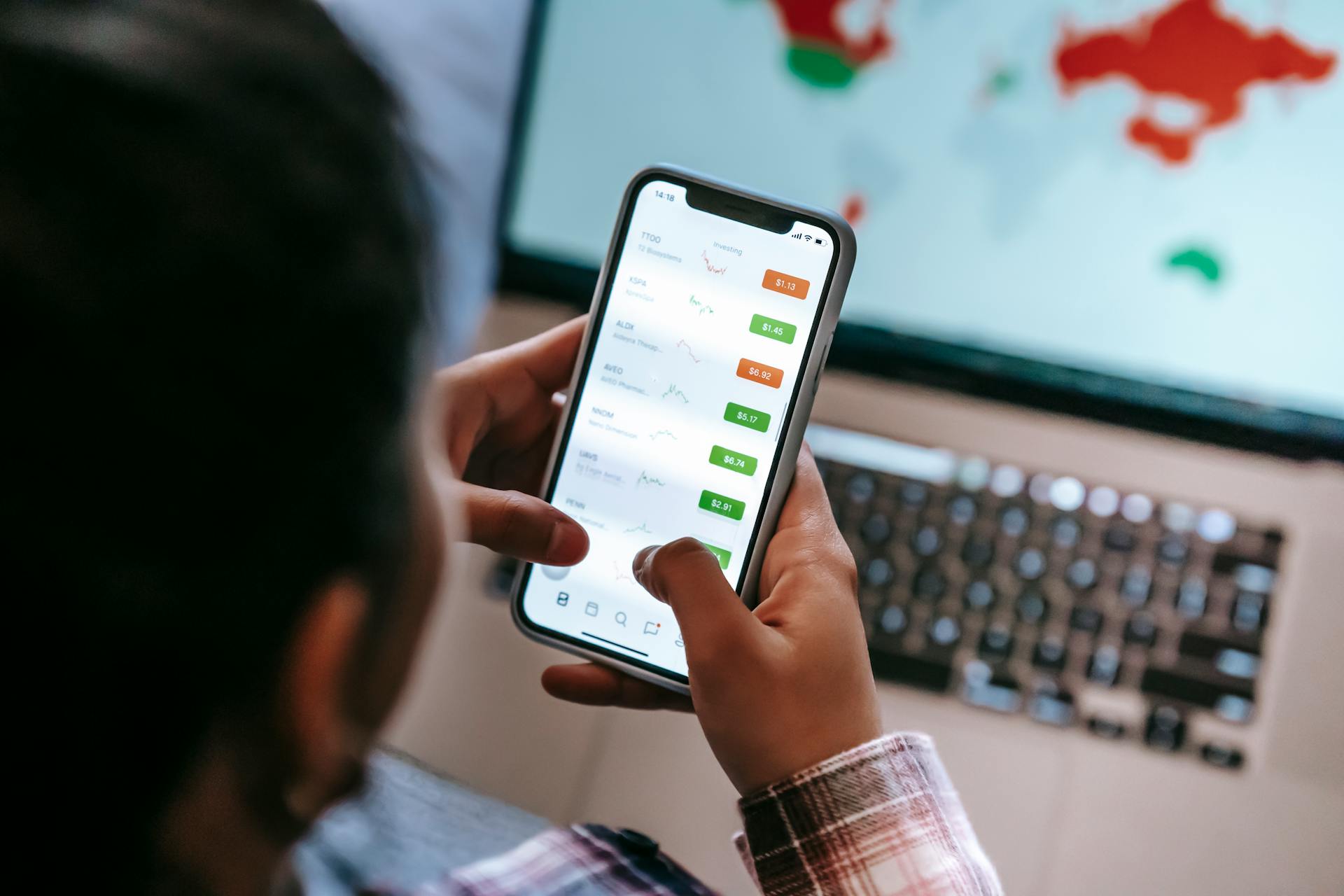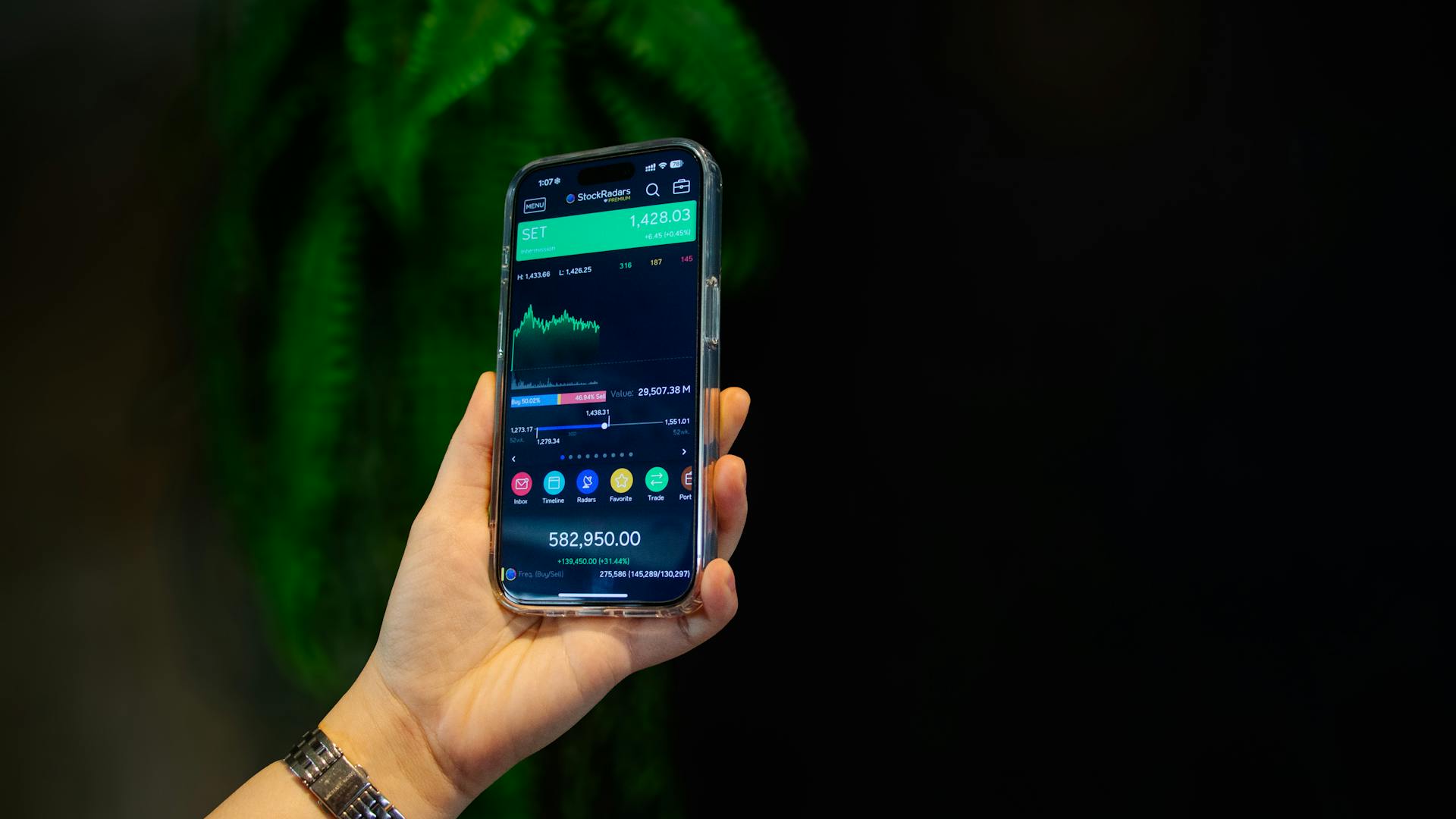
A CUSIP number is a unique nine-character code assigned to a security, such as a stock or bond, to identify it on the financial markets.
It's like a Social Security number for your investments.
CUSIP stands for Committee on Uniform Securities Identification Procedures, and it was developed by the American Bankers Association in the 1960s.
The CUSIP number is used to facilitate trading and settlement of securities, making it easier for investors to buy and sell shares.
If this caught your attention, see: Cusip to Ticker
What Is a CUSIP Number?
A CUSIP number is a nine-character alphanumeric code assigned to a security, such as a stock or bond, by CUSIP Global Services.
It's used to identify a specific security in the financial industry.
CUSIP stands for Committee on Uniform Security Identification Procedures.
The first six characters of a CUSIP number are unique to the issuer, while the last three are unique to the specific security.
CUSIP numbers are often used in financial transactions, such as buying and selling securities, to ensure accurate identification and processing.
They're also used by financial institutions to track and report on securities ownership and trading activity.
CUSIP numbers are typically displayed on stock certificates, brokerage statements, and other financial documents.
The CUSIP number is usually printed in a box or other prominent location to make it easy to read.
Explore further: Cusip vs Ticker
Finding Your CUSIP Number
You can find your CUSIP number in several ways. One of the simplest methods is to request a stock quote on a broker's website, which often includes the CUSIP number. This is a convenient option for investors who already have a brokerage account.
You can also find the CUSIP number on a brokerage's official statements sent to clients. If you own physical stock or bond certificates, the number will be listed on them as well. Certain bond CUSIPs can be obtained through the Municipal Securities Rule-Making Board via the Electronic Municipal Market Access system.
If you're an investor, your brokerage platform is the quickest way to find the CUSIP number. Simply go to your account's "holdings" or "portfolio" section, where the CUSIP for each security you own will be listed.
You can use online tools, such as CUSIP Global Services, to search for any CUSIP number. These tools allow you to enter the company or security name and quickly retrieve the correct CUSIP.
Consider reading: Chip Stock Investor
Here are some options to find your CUSIP number:
- Brokerage account: Check your account's "holdings" or "portfolio" section.
- Brokerage website: Request a stock quote, which often includes the CUSIP number.
- Brokerage statements: Look for the CUSIP number on official statements sent to clients.
- Physical certificates: Check the certificates for the CUSIP number.
- Online tools: Use CUSIP Global Services or similar tools to search for the CUSIP number.
Understanding CUSIP vs. ISIN
CUSIP numbers are the standard in the U.S. and Canada, while ISINs are used internationally, especially in Europe and worldwide.
ISINs have 12 characters, with the first two characters indicating the country of origin, such as "IN" for India. The rest of the number identifies the issuer, product type, and includes a check digit.
To distinguish between CUSIP and ISIN, note that CUSIP numbers are always 9 characters long and unique, while ISINs are 12 characters long and also unique.
Intriguing read: Transcribe Numbers
ISIN vs. CINS
ISIN and CINS are two important identifiers used alongside CUSIP. CUSIP Global Services has a series of other important identifiers, and ISIN and CINS are two of them.
ISIN is another identifier used by CUSIP Global Services. ISIN stands for International Securities Identification Number.
CINS is also used by CUSIP Global Services.
ISIN vs. CUSIP
ISIN vs. CUSIP: What's the Difference?
ISINs are used internationally, whereas CUSIP numbers are primarily used in the U.S. and Canada. ISINs have 12 characters, while CUSIP numbers have 9 characters.
The International Organization for Standardization assigns and manages ISINs, which have a specific format that includes a country code, national identifier, and check digit. CUSIP numbers, on the other hand, have a structure that includes the issuer's identifier, issue identifier, and check digit.
Here's a comparison of the two:
In summary, ISINs are used internationally to identify securities, while CUSIP numbers are used in the U.S. and Canada to identify securities. Understanding the difference between these two identifiers is essential for navigating the world of finance.
Frequently Asked Questions
Does everyone have a CUSIP number?
No, not everyone has a CUSIP number, as it is assigned to registered securities issued by specific companies and government entities. To find out if you have a CUSIP number, check your security's documentation or contact the issuer directly.
Featured Images: pexels.com


